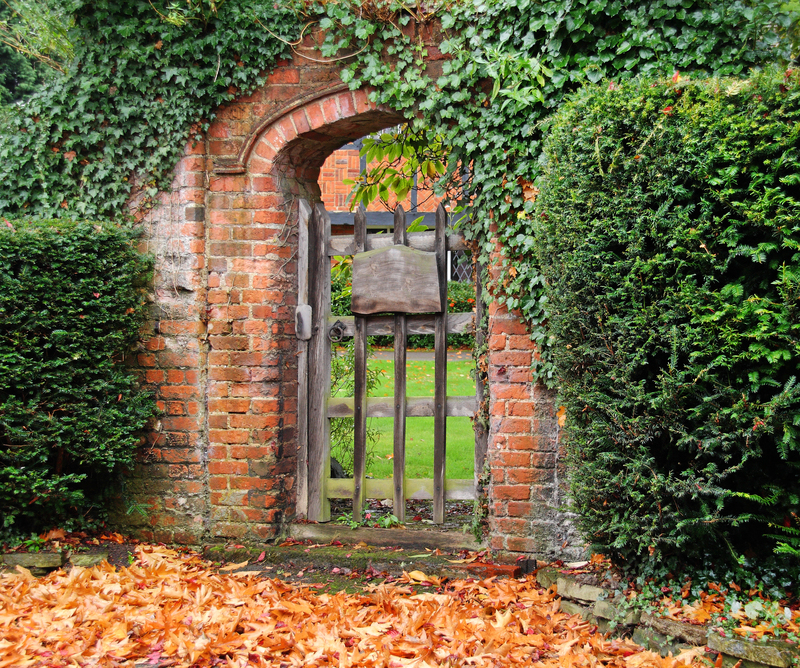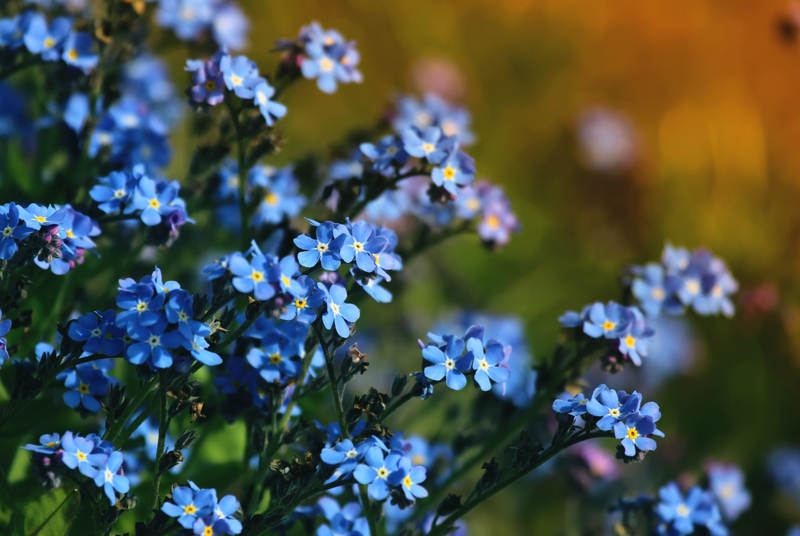Maximize Your Space with Vertical Gardening Solutions
Posted on 13/06/2025
Maximize Your Space with Vertical Gardening Solutions
Are you struggling to fit more green into your limited living area? Whether you live in a small apartment, have a compact backyard, or want to bring gardens into urban spaces, vertical gardening solutions offer an innovative way to maximize every square foot. Discover how you can create lush, productive, and beautiful vertical gardens to transform your indoor or outdoor spaces.
Why Choose Vertical Gardening?
With growing urbanization and shrinking garden plots, vertical gardening has gained immense popularity among gardeners, homeowners, and renters alike. Let's delve into some compelling reasons to consider gardening vertically:
- Space Efficiency: Utilize unused walls, fences, and even balcony railings.
- Enhanced Aesthetics: Bring visual interest and natural beauty to bland surfaces.
- Improved Air Quality: Plants help purify air in both indoor and outdoor environments.
- Better Accessibility: Easier maintenance without excessive bending or squat work.
- Diverse Planting Options: Grow herbs, vegetables, ornamentals, and air-purifying plants.
- Urban Greening: Combat urban heat islands and provide habitats for pollinators.

The Best Vertical Gardening Solutions for Any Space
There are a variety of vertical garden ideas to suit every location and budget. Below, we'll examine popular methods to make the best use of your available area:
1. Wall-Mounted Planters
Wall planters are one of the most versatile and attractive solutions. They come in several forms:
- Pocket Planters: Fabric or plastic pockets attached to walls, perfect for small herbs and flowers.
- Wall Panels: Modular panels with individual planting cells, ideal for creating living walls indoors or outdoors.
- DIY Projects: Upcycle materials like pallets or shoe organizers for custom wall gardens.
Tip: Ensure your wall structure can support the weight of soil and water before installing planters.
2. Vertical Towers and Stacking Pots
Stackable planters and vertical towers let you grow multiple layers of plants upwards:
- Strawberry Towers: Perfect for berries, trailing plants, or small vegetables.
- Tiered Stands: Freestanding vertical racks with trays or pots.
- Hydroponic Towers: Soil-free systems for fast, clean vegetable production indoors or on patios.
These vertical gardening systems allow you to maximize plant density in limited floor space.
3. Trellises and Climbing Structures
Trellises, lattices, and pergolas give vining plants a place to flourish vertically. Common climbing plants include:
- Tomatoes
- Cucumbers
- Peas and beans
- Ivy and flowering vines
A trellis garden is a smart way to create privacy screens, shade, or unique green backdrops in your yard or balcony.
4. Hanging Gardens and Suspended Planters
Hanging pots or baskets from ceiling hooks, rods, or even old ladders can dramatically increase your growing area. These suspended gardens offer:
- Flexible placement and arrangement
- Creative options for herbs, flowers, and even some veggies
- A beautiful cascading effect
Note: Regular watering is essential, as hanging containers dry out quickly.
5. Fence and Railing Gardens
If you have a balcony, deck, or backyard fence, transform it into a vibrant garden wall by attaching planter boxes, shoe organizers, or recycled bottles.
- Opt for shallow-rooted plants for success
- Mix decorative flowers and edible herbs
- Consider self-watering systems for convenience
Choosing the Best Plants for Vertical Gardens
Maximizing space with vertical gardening is easier when you pick plants well suited to vertical growth. Popular choices include:
Edible Plants
- Herbs such as basil, mint, parsley, and thyme
- Leafy greens: lettuce, spinach, arugula, kale
- Strawberries and small root vegetables like radishes
- Chilies, cherry tomatoes, and dwarf peppers
Ornamental Plants
- Ferns and pothos for indoor air cleaning
- Flowering plants: petunias, nasturtiums, violas
- Succulents and sedums for easy-care, drought-tolerant displays
Climbing and Trailing Varieties
- Jasmine, clematis, or morning glory for stunning flower displays
- English ivy and philodendron for year-round greenery
- Sweet peas and passionflower for fragrant, vibrant color
When selecting plants, always consider your local light conditions and watering needs for the greatest success.
Step-by-Step Guide to Creating Your Vertical Garden
Ready to maximize your small space with a vertical garden? Here's how you can get started:
1. Assess Your Space and Light
- Identify sunny, partially shaded, and shady areas.
- Measure wall, fence, or balcony dimensions for best fit.
- Decide if your garden will be indoors, outdoors, or both.
2. Choose Your Vertical Gardening System
- Pick a method - wall planters, towers, trellises, hanging baskets, etc.
- Check for available kits or DIY possibilities.
- Make sure the structure is sturdy and accessible for maintenance.
3. Select and Prepare Plants
- Pick varieties matched to light, water, and temperature requirements.
- Mix edible and ornamental species for year-long interest.
- Use quality potting soil and ensure proper drainage.
4. Install and Plant
- Secure vertical mounts on strong, weight-bearing surfaces.
- Arrange plants by height, light need, and decorative value.
- Water thoroughly after planting, and mulch to reduce evaporation.
5. Maintain Your Vertical Garden
- Watering: Vertical gardens may need more frequent watering. Drip irrigation can help.
- Fertilizing: Use slow-release food to support frequent growth.
- Pruning: Trim plants to maintain airflow and prevent overcrowding.
- Pest Control: Monitor for signs of insects or diseases regularly.
Creative Tips for Stunning Vertical Gardens
- Mix textures and colors: Combine trailing, upright, and flowering varieties for dynamic appeal.
- Use recycled materials: Old pallets, crates, or shoe organizers make eco-friendly planters.
- Add lighting: Highlight your garden with weatherproof LEDs or fairy lights.
- Think modular: Design your vertical system to expand or change with the seasons.
- Go mobile: Wheels or handles let you move planters for seasonal sunlight or weather protection.
Frequently Asked Questions about Vertical Gardening
Q: How much maintenance do vertical gardens require?
A: Maintenance depends on your system and plants. Automated watering and low-maintenance plants, like succulents or certain herbs, can simplify care. Occasional pruning, feeding, and monitoring for pests are essential for all types.
Q: Can I use vertical gardening solutions inside my home?
A: Absolutely! Indoor wall planters or hanging gardens are great for herbs, ferns, and air-purifying plants. Just be mindful of moisture and light requirements.
Q: What is the best vertical gardening system for beginners?
A: Start small with stackable pots or fabric wall planters. These are simple to install and require minimal investment, making them perfect for learning the basics of vertical gardening.
Q: How can I water vertical gardens efficiently?
A: Drip irrigation or self-watering planters reduce manual watering needs. Alternatively, water from the top and let gravity distribute moisture downward for a multi-level vertical system.
Q: What are the challenges of vertical gardening?
A: Main challenges include ensuring adequate water, avoiding excess weight on structures, selecting suitable plant species, and keeping an eye out for pests. Careful planning prevents most issues.

The Benefits of Vertical Gardening for Urban and Small Spaces
Adopting vertical gardening techniques brings more than just efficient use of space. Key benefits include:
- Increased yields: Growing upwards supports more plants per area.
- Visual improvement: Transform unappealing walls or fences into artistic green spaces.
- Healthier homes: Plants filter air and add moisture, benefiting well-being.
- Environmental impact: Reduce your carbon footprint and attract pollinators for local biodiversity.
For renters, freestanding or easily removable planters allow you to bring your vertical garden wherever you go.
Conclusion: Transform Any Area with Vertical Gardening Solutions
Whether you have a tiny balcony, urban patio, or want to green your living room, vertical gardening solutions offer creative and flexible ways to grow lush plants in the tightest spots. With endless design possibilities and plant combinations, your garden can be both practical and uniquely personal.
Ready to start your journey? Embrace vertical garden ideas, maximize your available space, and enjoy the endless satisfaction of home-grown flowers, herbs, and vegetables--no matter where you live.
For more vertical gardening tips, DIY ideas, and plant guides, explore our blog or sign up for our newsletter! Share your own vertical garden success stories and inspire others to go green, one wall at a time.

